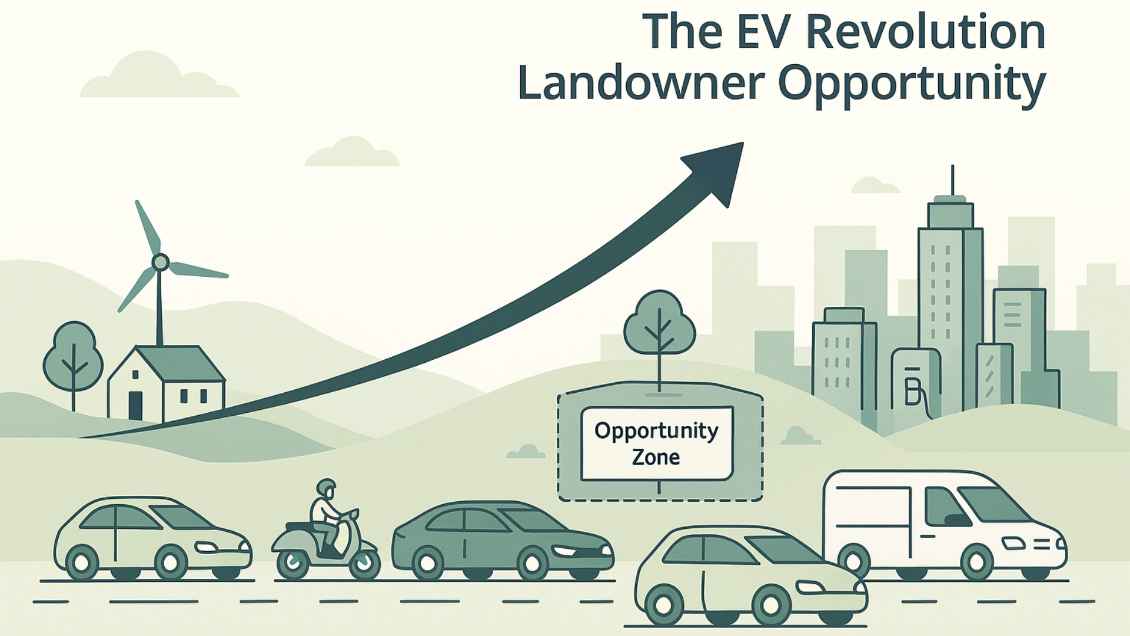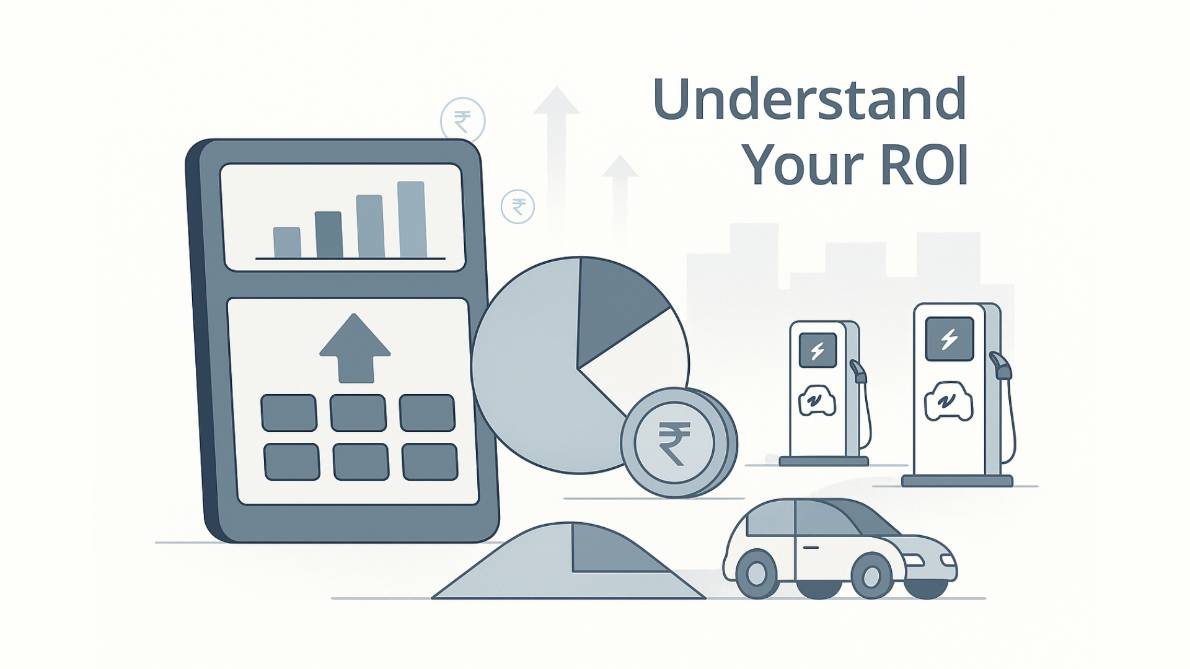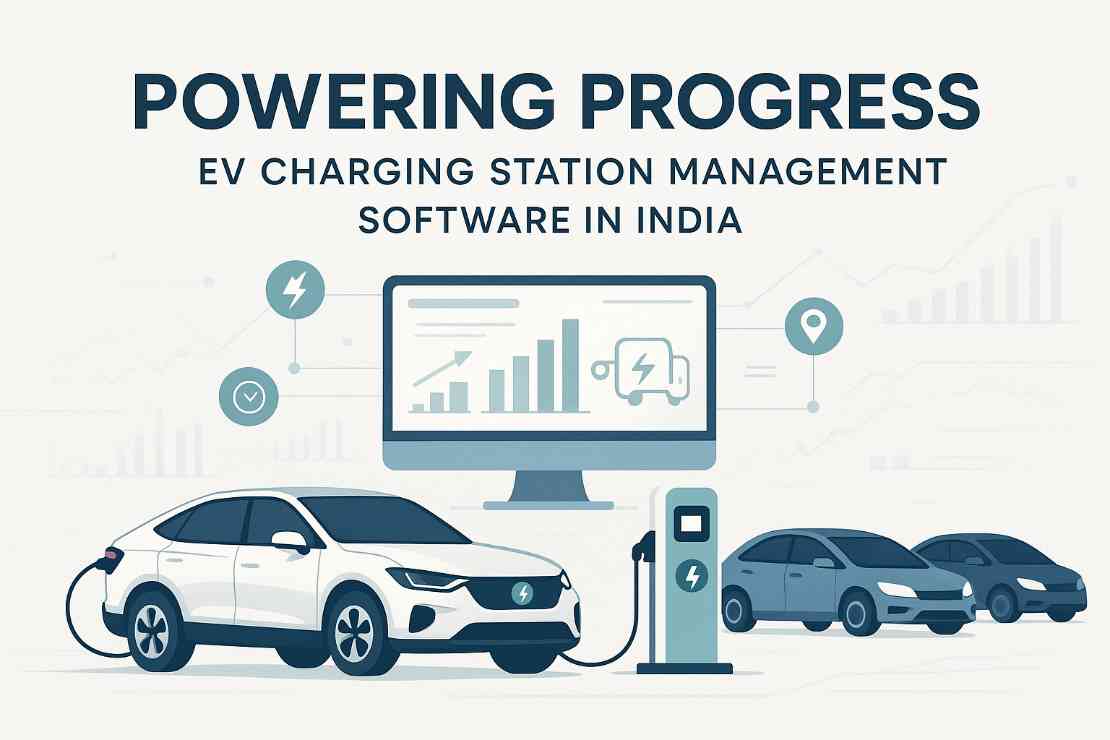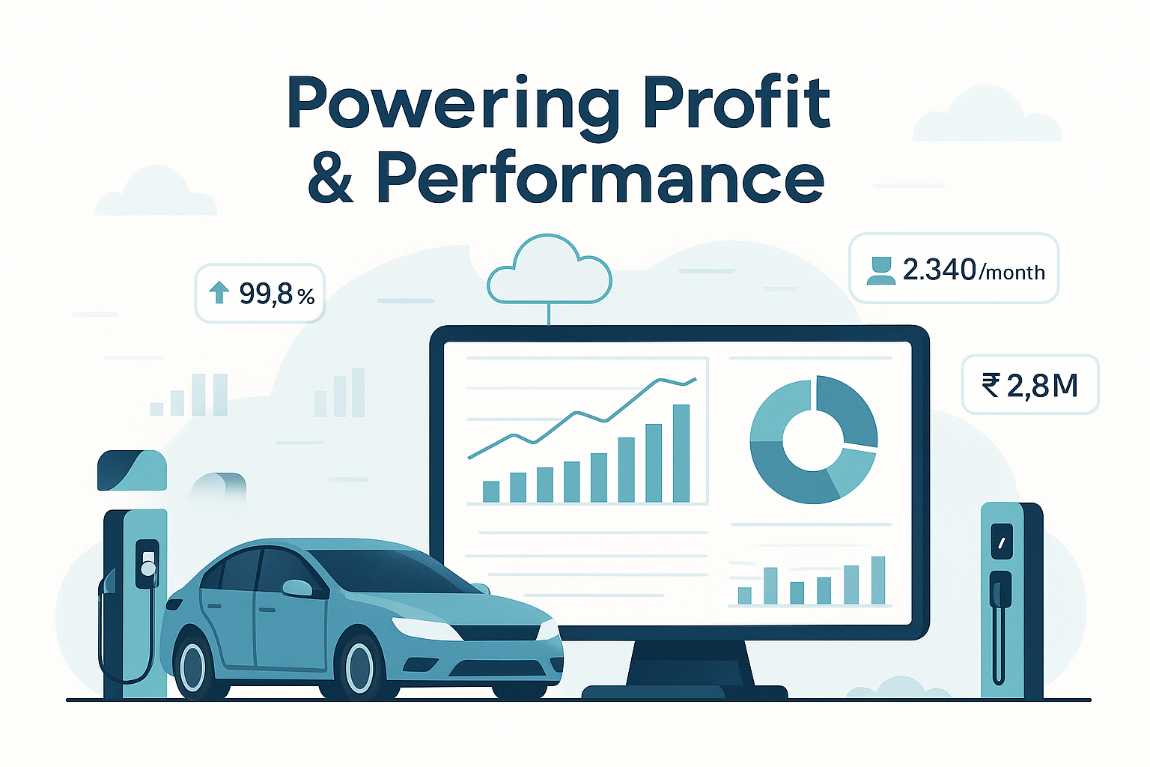Electric mobility is racing ahead, and India is one of the fastest-growing markets in the world. Yet even as millions of new electric vehicles (EVs) roll onto the roads, many owners still wonder where they will plug in. That gap creates a golden opening for landowners.
Why Owning Land Makes Starting an EV Charging Station a Smart Investment is more than a catchy idea—it is a proven strategy for building a resilient, future-ready income stream. In this in-depth guide, we will explore the financial logic, practical steps, and long-term advantages that come from turning idle land into a buzzing charging hub.
The EV Revolution and the Landowner Opportunity

India’s EV adoption rate is climbing sharply, spurred by falling battery prices, rising fuel costs, and strong government incentives. The Ministry of Power aims for 30 percent electric passenger vehicle sales by 2030. More EVs mean more demand for reliable charging away from home, and landowners sit at the heart of the solution. Why Owning Land Makes Starting an EV Charging Station a Smart Investment becomes clear once you see how policy, technology, and consumer behavior are converging.
Surging EV Adoption in India
Recent industry reports show EV registrations tripling year-over-year in several states. Tier-1 cities started the trend, but Tier-2 and rural regions are catching up fast as two-wheelers, three-wheelers, and commercial fleets electrify. This widening footprint means convenient public charging must extend far beyond city centers—a scenario tailor-made for strategically located parcels of private land.
Government Incentives and Policy Tailwinds
Central programs such as FAME-II, along with state-level subsidies, reduce both capital expenditure and ongoing operating costs. Concessional land-use approvals, lower electricity tariffs for charging infrastructure, and the forthcoming Green Hydrogen and EV corridor schemes further strengthen the case. Grants, soft loans, and accelerated depreciation directly boost returns, underscoring why owning land makes starting an EV charging station a smart investment for forward-thinking property holders.
Turning Bare Land Into a Revenue Engine
Land often sits unused or generates minimal rent. Converting even a small section into an EV charging zone transforms that static asset into an active profit center.
Direct Income From Charging Fees
Every kilowatt-hour (kWh) dispensed can be billed at market-competitive rates. Fast chargers develop higher throughput, while AC points encourage longer stays (and more spending) at accompanying retail or food outlets. Depending on location and utilization, margins on electricity resales can range from 15–35 percent—one of the primary reasons why owning land makes starting an EV charging station a smart investment.
Boosting Footfall and Ancillary Spending
Retailers already understand the value of dwell time. Drivers typically spend 20–40 minutes per fast-charging session and may linger longer with slower chargers. Coffee shops, convenience stores, and quick-service restaurants benefit from the captive audience. Even if you do not run a business on-site, you can lease space to third-party vendors for an additional revenue layer.
Appreciation of Property Value
Installing sustainable infrastructure raises the overall worth of your land. Green amenities appeal to institutional investors, hospitality chains, and corporate tenants who want to showcase environmental responsibility. As charging stations become essential public utilities, properties with existing installations command premium valuations—another proof that why owning land makes starting an EV charging station a smart investment is not hype but hard economics.
How Land Ownership Reduces Barriers to Entry
You already control the most difficult asset to secure: the site itself. This advantage lowers both cost and complexity compared with entrepreneurs who must lease space.
Site Control and Speed to Market
Site acquisition delays can add months to a charging project. Landowners bypass bidding wars and lengthy negotiations, enabling faster permitting and construction. Getting to market first helps lock in customer loyalty and establish brand reputation before competitors arrive.
Lower Upfront Costs for Acquisition and Leasing
Leasing high-visibility plots near highways or shopping hubs can be expensive and subject to annual escalation. By leveraging your own land, you eliminate that recurring expense. The saved cash can fund additional chargers, solar canopies, or battery storage—elements that strengthen the station’s profitability and reinforce why owning land makes starting an EV charging station a smart investment.
Easier Access to Financing and Grants
Banks and funding agencies look favorably on projects with clear collateral. Your land can serve as security for loans or qualify you for special government programs that prioritize owner-operated sites. Equity investors also prefer ventures where the principal asset is already secured, reducing perceived risk and shortening due-diligence cycles.
Crunching the Numbers: Understanding ROI

Return on investment (ROI) is ultimately what validates why owning land makes starting an EV charging station a smart investment. The math involves capital expenditure (CapEx), operational expenditure (OpEx), revenue forecasts, and break-even timelines.
Initial Capital Expenditure
CapEx covers hardware, civil works, electrification, and network software:
- DC fast chargers (60–120 kW)
- AC chargers for extended parking
- Transformer or service-line upgrades
- Parking bay markings, canopies, and security systems
- Payment and monitoring software
Landowners typically spend 20–30 percent less than non-owners because they avoid leasehold improvements and rent deposits.
Operational Expenditure
OpEx includes electricity, maintenance, software subscriptions, and staffing. Smart charging algorithms can shift loads to off-peak hours, shaving energy costs by 10–15 percent. Preventive maintenance contracts keep uptime above 97 percent, ensuring customer retention.
Break-Even Timelines
Well-placed Indian charging stations often hit break-even within three to five years—quicker when coupled with incentives or co-located services. Owning the land accelerates payback because rent is removed from the cost stack, illustrating once more why owning land makes starting an EV charging station a smart investment.
Planning Your Station the Right Way
Owning land gives you a head start, but proper planning maximizes returns.
Location Analysis and Power Availability
Assess traffic counts, EV density, and proximity to highways or residential clusters. Engage the local utility early to confirm transformer capacity and grid stability. Where the grid is weak, consider on-site solar plus battery storage to smooth peaks and reduce daytime draw.
Selecting the Right Hardware
Match charger mix to audience needs. Commuter corridors favor ultra-fast DC. Office parks do well with Level-2 AC. Modular hardware lets you expand capacity without re-digging trenches—a prime tactic reflecting why owning land makes starting an EV charging station a smart investment, since you can scale as demand grows.
Software, Payment, and Network Connectivity
Cloud platforms enable real-time monitoring, dynamic pricing, and remote diagnostics. Open payment systems (UPI, credit cards, RFID) broaden user adoption. Interoperability with roaming networks ensures EV drivers find your station via popular apps, driving utilization—and revenue—higher.
Managing Risks and Maximizing Returns
Even smart investments entail risk. Proactive strategies safeguard profitability.
Utility Coordination and Future Proofing
Negotiate favorable demand charges and secure additional grid capacity for future expansion. Lay extra conduits during initial construction; it costs far less than retrofitting later. Such foresight epitomizes why owning land makes starting an EV charging station a smart investment, as it positions you to capitalize on next-generation chargers without significant disruption.
Maintenance and Customer Experience
Downtime erodes trust quickly. Establish service-level agreements keeping units online. Provide shade, lighting, clean restrooms, and reliable Wi-Fi—amenities that turn a functional pit stop into a preferred destination.
Scaling Up: From One Site to a Network
Success breeds growth. Data from your first station helps fine-tune site selection, pricing, and marketing for additional properties. If you own multiple plots, you can replicate the model cost-effectively, compounding the evidence for why owning land makes starting an EV charging station a smart investment over the long haul.
Conclusion: Land Ownership Unlocks Long-Term Value
As India electrifies transportation, charging infrastructure will become as indispensable as petrol pumps. Property holders who act now not only generate immediate cash flow but also future-proof their assets against shifting mobility trends. Why Owning Land Makes Starting an EV Charging Station a Smart Investment is therefore less a question and more a roadmap to sustainable prosperity. By blending strategic planning with the inherent advantages of land ownership, you create a resilient business that serves drivers, the environment, and your bottom line.
Frequently Asked Questions
Q1. Do I need commercial zoning to build an EV charging station on my land?
Local regulations vary, but most municipalities allow charging infrastructure under commercial or mixed-use zoning. If your land is residential or agricultural, you may need a change-of-use permit. Early consultation with local planning authorities streamlines the process.
Q2. How much electricity will my station consume, and can I offset it with solar panels?
A single 60 kW DC fast charger operating at 30 percent utilization uses roughly 13,000 kWh per month. Roof-top or canopy-mounted solar can cover part of this load, especially during peak sun hours. Pairing solar with battery storage further reduces grid dependence and demand charges.
Q3. What is the average lifespan of charging equipment?
Modern DC chargers are rated for 10–12 years with proper maintenance. Software upgrades and modular components can extend functional life, protecting your investment and reinforcing why owning land makes starting an EV charging station a smart investment.
Q4. Can I start small with Level-2 chargers and upgrade later?
Absolutely. Many landowners begin with lower-cost AC units to test demand. Conduit oversizing and spare electrical capacity during initial construction make future DC fast-charger upgrades straightforward and cost-efficient.
Q5. How do I set pricing that attracts drivers but ensures profitability?
Analyze local electricity tariffs, competitor rates, and driver expectations. Dynamic pricing—higher during peak demand, lower off-peak—balances utilization with revenue. Monitoring station data helps fine-tune rates over time.


.jpeg)





